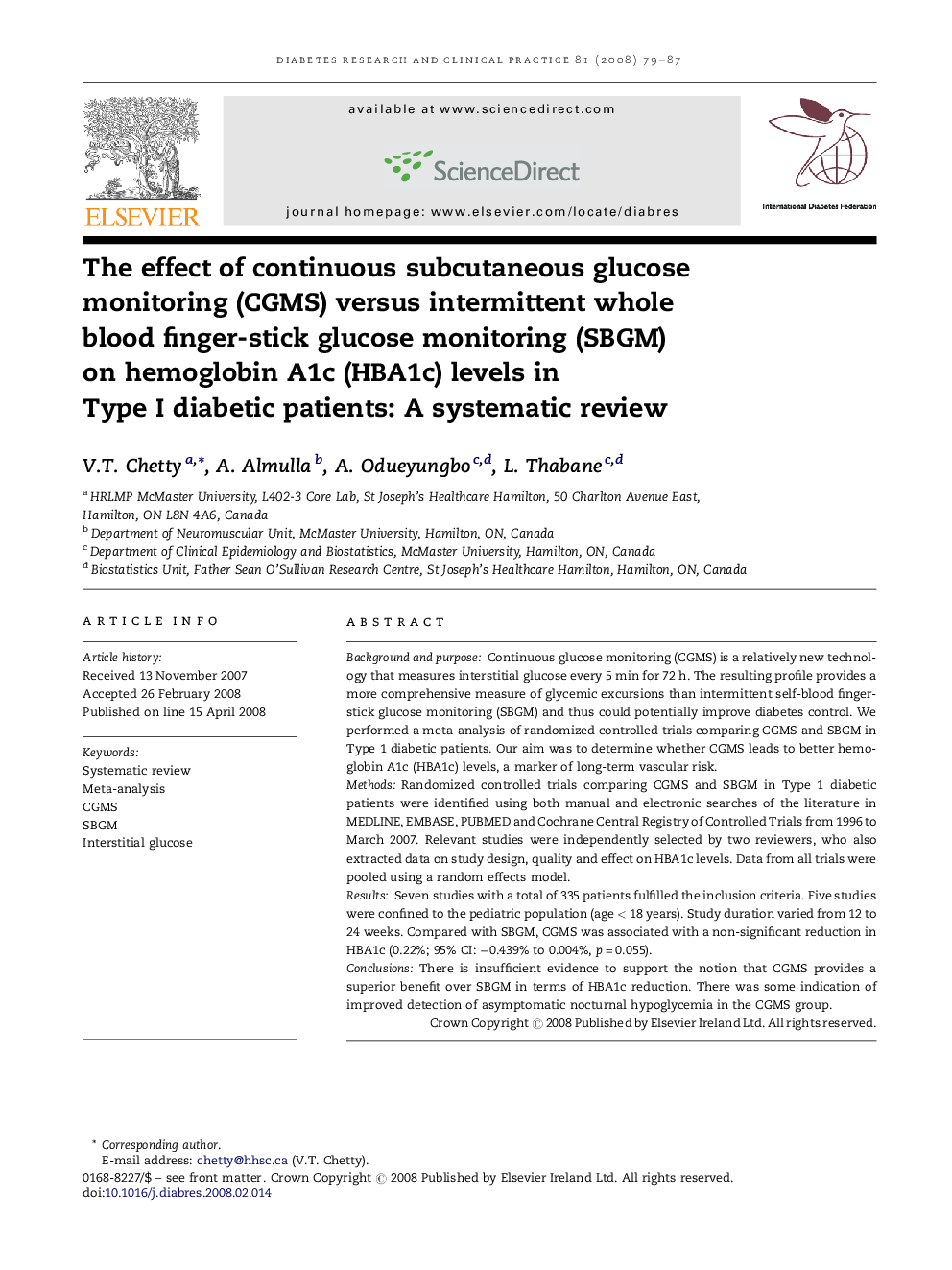| Article ID | Journal | Published Year | Pages | File Type |
|---|---|---|---|---|
| 2798181 | Diabetes Research and Clinical Practice | 2008 | 9 Pages |
Background and purposeContinuous glucose monitoring (CGMS) is a relatively new technology that measures interstitial glucose every 5 min for 72 h. The resulting profile provides a more comprehensive measure of glycemic excursions than intermittent self-blood finger-stick glucose monitoring (SBGM) and thus could potentially improve diabetes control. We performed a meta-analysis of randomized controlled trials comparing CGMS and SBGM in Type 1 diabetic patients. Our aim was to determine whether CGMS leads to better hemoglobin A1c (HBA1c) levels, a marker of long-term vascular risk.MethodsRandomized controlled trials comparing CGMS and SBGM in Type 1 diabetic patients were identified using both manual and electronic searches of the literature in MEDLINE, EMBASE, PUBMED and Cochrane Central Registry of Controlled Trials from 1996 to March 2007. Relevant studies were independently selected by two reviewers, who also extracted data on study design, quality and effect on HBA1c levels. Data from all trials were pooled using a random effects model.ResultsSeven studies with a total of 335 patients fulfilled the inclusion criteria. Five studies were confined to the pediatric population (age < 18 years). Study duration varied from 12 to 24 weeks. Compared with SBGM, CGMS was associated with a non-significant reduction in HBA1c (0.22%; 95% CI: −0.439% to 0.004%, p = 0.055).ConclusionsThere is insufficient evidence to support the notion that CGMS provides a superior benefit over SBGM in terms of HBA1c reduction. There was some indication of improved detection of asymptomatic nocturnal hypoglycemia in the CGMS group.
